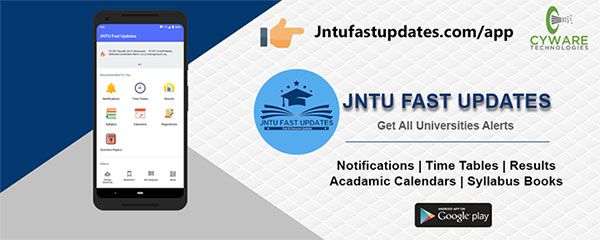JNTUK R20 2-2 Thermal Engineering-I Material/Notes PDF Download
Students those who are studying JNTUK R20 Mechanical Branch, Can Download Unit wise R20 2-2 Thermal Engineering-I (TE-1) Material/Notes PDFs below.

JNTUK R20 2-2 Thermal Engineering-I Material/Notes PDF Download
OBJECTIVES:
- To make the student learn and understand the reasons and affects of various losses that occur in the actual engine operation.
- To familiarize the student with the various engine systems along with their function and necessity.
- To learn about normal combustion phenomenon and knocking in S.I. and C.I. Engines and to find the several engine operating parameters that affect the smooth engine operation.
- To make the student learn to perform testing on S.I and C.I Engines for the calculations of performance and emission parameters.
UNIT-1
Air standard Cycles: otto, diesel and dual cycles, its comparison, Brayton cycle
Actual Cycles and their Analysis: Introduction, Comparison of Air Standard and Actual Cycles, Time Loss Factor, Heat Loss Factor, Exhaust Blowdown-Loss due to Gas exchange process, Volumetric Efficiency. Loss due to Rubbing Friction, Actual and Fuel-Air Cycles of CI Engines.
Download UNIT-1 Material PDF | Reference-2
UNIT-2
I. C. ENGINES : Classification – Working principles, Valve and Port Timing Diagrams, – Engine systems – Fuel, Carburettor, Fuel Injection System, Ignition, Cooling and Lubrication, principle of wankle engine, principles of supercharging and turbocharging.
Download UNIT-2 Material PDF | Reference-2
UNIT-3
Combustion in S.I. Engines : Normal Combustion and abnormal combustion – Importance of flame speed and effect of engine variables – Types of Abnormal combustion, pre-ignition and knocking (explanation of ) – Fuel requirements and fuel rating, anti knock additives – combustion chamber – requirements, types.
Combustion in C.I. Engines : Four stages of combustion – Delay period and its importance – Effect of engine variables – Diesel Knock– Need for air movement, suction, compression and combustion induced turbulence – open and divided combustion chambers and nozzles used – fuel requirements and fuel rating.
Download UNIT-3 Material PDF | Reference-2
UNIT-4
Measurement, Testing and Performance: Parameters of performance – measurement of cylinder pressure, fuel consumption, air intake, exhaust gas composition, Brake power – Determination of frictional losses and indicated power – Performance test – Heat balance sheet and chart.
Download UNIT-4 Material PDF | Reference-2
UNIT-5
GAS TURBINES: Simple gas turbine plant – ideal cycle, essential components – parameters of performance – actual cycle – regeneration, inter cooling and reheating –closed cycle type gas turbines.
JET PROPULSION: Principle of operation –classification of jet propulsive engines – working principles with schematic diagrams and representation on t-s diagram – thrust, thrust power and propulsion efficiency – turbo jet engines – needs and demands met by turbo jet – schematic diagram, thermodynamic cycle, performance evaluation (Definitions and Simple Problems).
ROCKETS: Application – working principle – classification – propellant type – thrust, propulsive efficiency – specific impulse – solid and liquid propellant rocket engines (only Theoretical concepts).
Download UNIT-5 Material PDF | Reference-2
TEXT BOOKS:
- I.C. Engines – V. Ganesan- Tata McGraw Hill Publishers
- Gas Turbines – V.Ganesan – Tata McGraw HillPublishers
REFERENCE BOOKS:
- Thermal Engineering – Mahesh Rathore- McGraw Hillpublishers
- I.C.Engines–AppliedThermosciences–C.R.Ferguson&A.T.Kirkpatrick-2 nd Edition Wiley Publ
- I.C. Engines – J.B.Heywood/McGrawHIll.
- Heat engines, Vasandani& Kumar – Thermalpublications
- Gas Turbine Theory – HIH Saravanamuttoo, Cohen, Rogers –PearsonPublishers
OUTCOMES:
- CO1: Derive the actual cycle from fuel-air cycle and air- standard cycle for all practical applications.
- CO2: Explain working principle and various components of IC engine
- CO3: Explain combustion phenomenon of CI and SI engines and their impact on engine variables.
- CO4: Analyze the performance of an IC engine based on the performance parameters.
- CO5: Explain the cycles and systems of a gas turbine and determine the efficiency of gas turbine.
- CO6: Explain the applications and working principle of rockets and jet propulsion.

320-x100(1).gif)
